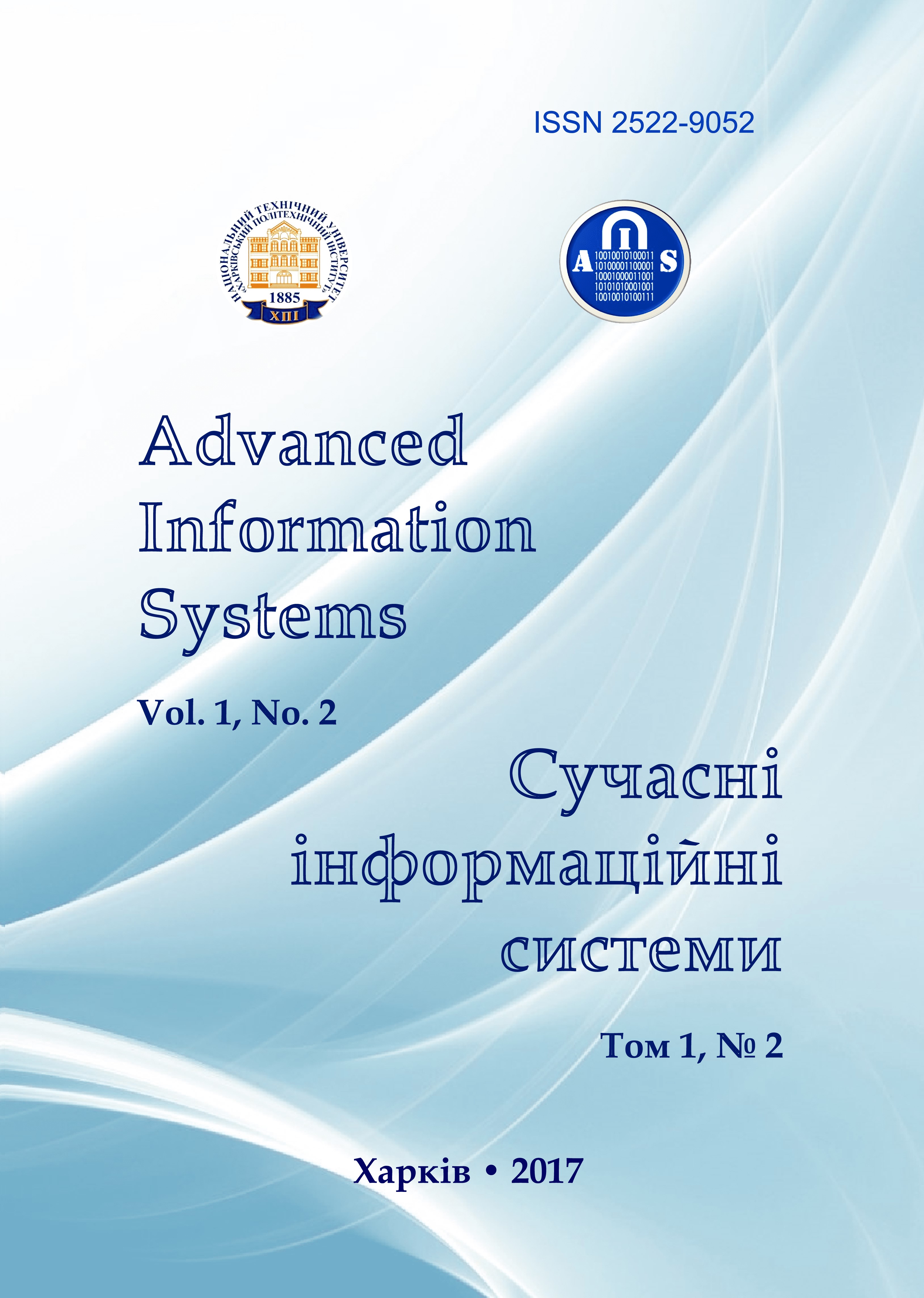Synthesis of the air pollution level control system on the basis of hyperconvergent infrastructures
Main Article Content
Abstract
The subject matter of the article is an air pollution control process. The aim is development of proposals for the synthesis of the air pollution control system based on hyperconvergent infrastructures. The objectives are: the development of a mathematical model for constructing pollutants concentration fields; substantiation and development of a conceptual model of the geoinformation system for air pollution control, justification and selection of the basic infrastructure of the control system. The methods used are: system analysis of risks, cause-and-effect analysis, statistical methods. The following results are obtained: The basic influencing on character of dispersion and distribution of harmful substances factors in atmosphere are allocated. A multifactorial mathematical model has been developed for constructing fields of concentration of pollutants, which is based on two types of distribution-the normal and SL-distribution of Johnson. The geoinformation technology (GIT) structure components are determined. A program for determining the stability class of the atmosphere has been developed. A model of the process under investigation on a cartographic basis was developed with the presentation of the results in the form of a concentration isotype. The structure of the database of the parameters of sources and characteristics of sources of air pollution, which is part of the serving hyperconvergent infrastructure, has been developed. Conclusion. The synthesized air pollution control system will allow to solve such tasks: collection of primary information, its systematization, analysis and formation of a data bank; processing and presentation of data in the form of thematic pollution maps; Assessment of the current state of the environment and forecast; analysis of the causes of observed and probable changes in the state; prompt provision of necessary information to all stakeholders.
Article Details
References
Kobtseva, N.Yu. and Ermolenko, B.V. (2012), The analysis of existing mechanisms of regulation of influences users on a condition of atmosphere and planned way soft heir perfection, Scientific Journal for Alternative Energy and Ecology,
No. 03 (107), pp. 5-12.
Priputina, I.V. and Bashkin, I.V. (2012), “Ekologicheskiye riski v svyazi s tekhnogennym zagryazneniyem okruzhayushchey sredy: analiz podkhodov i metodov otsenki” [Ecological risks in connection with technogenic pollution of the environment: an analysis of approaches and methods of assessment], Problemy analiza riska [Problems of risk analysis], No. 5. pp. 12-25.
Gorelik, D.O. and Konopelko, L.A. (1992), Monitoring zagryazneniya atmosfery i istochnikov vybrosov. Aeroanaliticheskiye izmereniya [Monitoring of air pollution and emission sources. Aerial analytic measurements], Publishing house of standards, Moscow, 432 р.
Ganja, D (2016), Hyperconvergence: IT infrastructure at times, two, three”, Zhurnal setevykh resheniy [Network Solutions Journal], No. 5, available at: www.osp.ru/lan/2016/05/13049349 (accessed April 23, 2017).
White Paper: Riverbed Hyper-converged Edge, available at: https://www.riverbed.com/document-repository/ white-paper--riverbed-hyper-converged-edge.html (accessed April 23, 2017).
Kuchuk, G., Kharchenko, V., Kovalenko, A. and Ruchkov E. (2016), “Approaches to Selection of Combinatorial Algorithm for Optimization in Network Traffic Control of Safety-Critical Systems”, Proceedings of IEEE East-West Design & Test Symposium (EWDTS’2016), pp. 384–389.
Vasilyeva, I.K. and Nechausov, A.S. (2016), “Struktura sistemy ekomonitoringa na osnove veroyatnostnoy modeli lokalnogo zagryazneniya atmosfery” [“The structure of the ecomonitoring system based on the probabilistic model of local atmospheric pollution”], Systemy obrobky informatsiyi [Information Processing Systems], No. 1(138), pp. 176-182.
Nechausov, A. (2016), “The information model of the system for local atmospheric air pollution monitoring”, Systemy obrobky informatsiyi [Information Processing Systems], No. 2(139), pp. 190-195.
